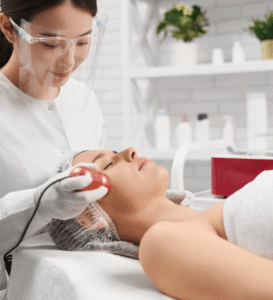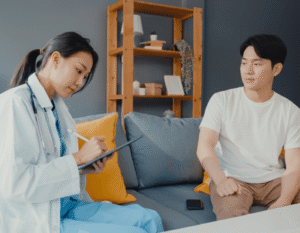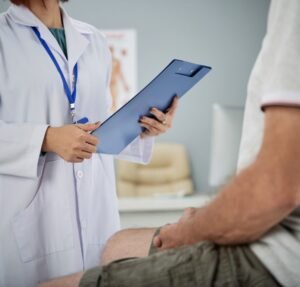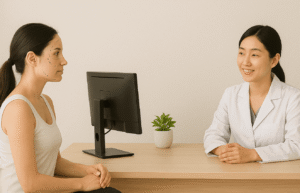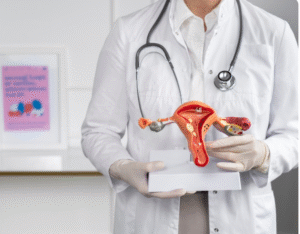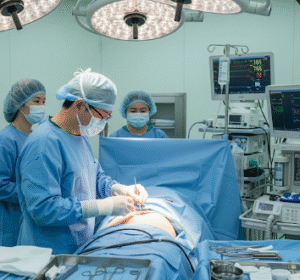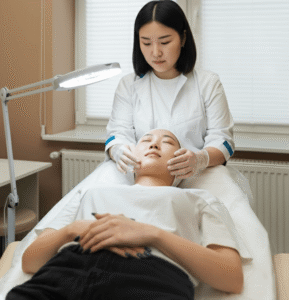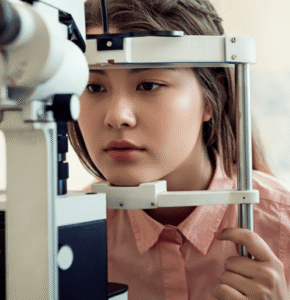Overview
Endoscopy is a minimally invasive diagnostic and therapeutic procedure that allows doctors to examine the inside of the digestive tract using a flexible tube equipped with a camera (endoscope). It is commonly used to detect and treat conditions of the esophagus, stomach, small intestine, and colon.
In South Korea, endoscopy is performed in modern gastroenterology centers and hospitals with advanced endoscopic technology, offering high-definition imaging, safe procedures, and skilled endoscopists. Korean hospitals are globally recognized for their accuracy, patient comfort, and rapid recovery protocols.
What is Endoscopy?
Endoscopy involves inserting a flexible endoscope through the mouth (upper GI endoscopy) or the rectum (colonoscopy/lower GI endoscopy) to visualize the digestive tract.
Endoscopy is commonly used to:
- Detect ulcers, tumors, polyps, and inflammation
- Investigate causes of abdominal pain, bleeding, or persistent heartburn
- Perform biopsies or tissue sampling
- Remove polyps or small growths
- Guide treatment for gastrointestinal disorders
This procedure is safe, minimally invasive, and often outpatient-based, allowing both diagnosis and treatment in one session.
What are the benefits?
Endoscopy provides numerous advantages:
- Direct visualization of the digestive tract → more accurate than imaging alone
- ➤ Early detection of gastrointestinal diseases → crucial for cancer prevention
- ➤ Ability to perform biopsies or remove polyps during the procedure
- ➤ Minimally invasive → avoids external incisions
- ➤ Quick recovery → most patients return to normal activities within 24 hours
- ➤ Widely available in Korea → modern equipment ensures precise diagnosis and treatment
Procedure Details
1) How should I prepare for Endoscopy?
Preparation depends on the type of endoscopy:
- Upper GI endoscopy → fasting for 6–8 hours before the procedure
- Colonoscopy → bowel cleansing with prescribed laxatives and dietary restrictions
- Medication review → inform the doctor of blood thinners or other medications
- Allergy information → especially regarding sedation or anesthesia
- Transportation arrangements → sedation may require someone to accompany you home
2) What happens during the procedure Endoscopy?
The procedure usually takes 15–60 minutes depending on the complexity:
- Sedation or anesthesia → mild sedation is administered for patient comfort
- Endoscope insertion → flexible tube with a camera is inserted through the mouth or rectum
- Visualization → images are displayed on a monitor for the doctor to examine
- Tissue sampling or treatment → biopsies, polyp removal, or minor interventions can be performed
- Completion → the endoscope is gently withdrawn, and the patient is monitored until sedation wears off
In Korea, endoscopy uses high-definition cameras and advanced imaging technologies for precise diagnostics and therapeutic interventions.
3) What happens after an Endoscopy?
- Recovery from sedation → usually 30–60 minutes of monitoring
- Mild discomfort → bloating, cramping, or sore throat may occur
- Diet → light meals can usually be resumed within a few hours
- Results → preliminary findings may be given immediately; biopsy results take a few days
- Follow-up → your doctor will discuss findings and further treatment if needed
Risks / Benefits
Potential Risks:
- Sore throat, mild bloating, or cramping
- Minor bleeding from biopsy or polyp removal
- Rare complications → perforation, infection, or adverse reaction to sedation
Key Benefits:
- Accurate detection and treatment of gastrointestinal conditions
- ➤ Minimally invasive with rapid recovery
- ➤ Early diagnosis of serious conditions such as cancer
- ➤ Therapeutic procedures can be performed simultaneously
- ➤ High success rates in Korea with expert endoscopists
Recovery and Outlook
- Immediate recovery → most patients can resume normal activities the same day
- Long-term monitoring → patients with chronic GI conditions benefit from routine endoscopies
- Treatment planning → results guide further therapy or interventions
- In Korea, follow-up care is thorough, ensuring proper healing and prevention of recurrence
When To Call the Doctor
Contact your healthcare provider if you experience:
- Severe abdominal pain or persistent bloating
- ➤ Bleeding from the digestive tract
- ➤ Fever or signs of infection
- ➤ Persistent nausea or vomiting
- ➤ Any unusual symptoms after sedation
Prompt evaluation ensures early management and prevents complications.
Best Korea Option / Process
South Korea offers top-tier endoscopy services:
- High-definition endoscopic equipment → precise visualization and treatment
- Expert gastroenterologists with experience in diagnostic and therapeutic procedures
- Comprehensive care packages → pre-procedure consultation, endoscopy, biopsy, and follow-up
- Minimally invasive approach → outpatient procedure, fast recovery
- International patient support → multilingual staff and streamlined appointment process
Patients choosing Korea for endoscopy can expect accurate diagnostics, safe procedures, and professional follow-up care, making it one of the best destinations globally for gastrointestinal evaluation.


